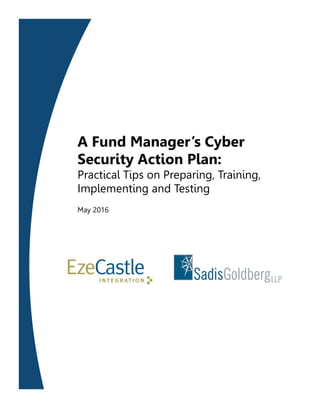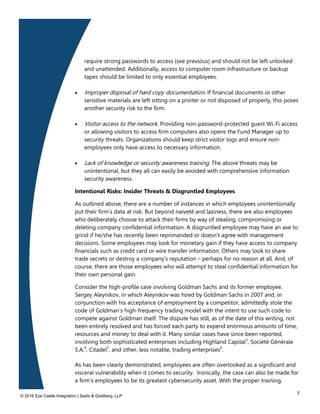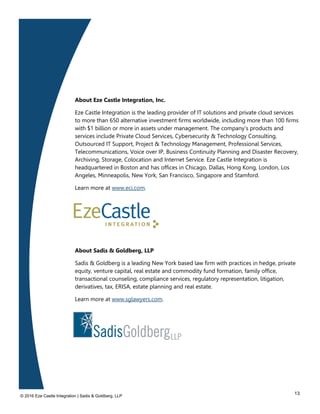This document provides guidance for investment fund managers on developing a cybersecurity action plan and program. It discusses the current cybersecurity risks and regulatory landscape, highlighting that regulators expect firms to have cybersecurity programs in place. It notes that employees can pose risks if not properly trained, as they may fall victim to phishing or share sensitive information unintentionally. The document recommends that firms implement training programs for employees, establish clear security policies and plans, and ensure management prioritizes cybersecurity culture. It also suggests protecting against potential insider threats from disgruntled employees.












